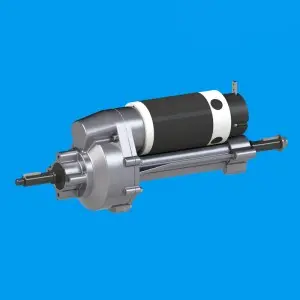As an essential component of modern vehicles, transaxles play a vital role in delivering optimum performance and forward motion. However, even the strongest, well-designed transaxles can experience problems over time. In this blog, we delve into the world of transaxle problems, discover the reasons behind them, and provide helpful troubleshooting tips to keep your vehicle running smoothly.
Learn about transaxles:
A transaxle is an integrated unit consisting of a transmission and differential and is an essential part of a front-wheel drive or all-wheel drive system. Its main function is to convert the engine’s rotational power into usable torque that propels the vehicle forward.
Common transaxle problems:
1. Liquid leakage:
One of the most common problems faced by transaxles is fluid leakage, which can seriously affect its performance. Fluid leaks usually indicate damaged seals, gaskets, or cracks in the housing. Prompt troubleshooting and resolution of such leaks is critical to prevent further damage to the transaxle and other drivetrain components.
2. Gear slipping:
Another common symptom of transaxle problems is slipping gears. This happens when the transmission has trouble staying in a particular gear or automatically shifts into neutral. Slipping gears can be attributed to a variety of factors, including worn clutch plates, malfunctioning solenoid valves, or low fluid levels. If not addressed, severe damage to the transaxle system could result.
3. Strange sound:
Unusual noises from the transaxle area may indicate an underlying problem. Whooping, grinding, or clanging noises may indicate bad bearings, worn gears, or insufficient lubrication within the transaxle. Prompt identification and resolution of these noises will not only extend the life of the transaxle, but also prevent costly repairs later.
4. Vibration and shaking:
Experiencing excessive vibration or shaking while driving may indicate a problem with the transaxle. This can happen because of misaligned components, damaged CV joints, or worn transmission mounts. Ignoring this symptom may cause further damage to surrounding parts such as axles and propshafts.
Troubleshooting Tips:
1. Regular maintenance:
Following the manufacturer’s recommended maintenance schedule is critical to keeping your transaxle in top condition. Regular fluid changes, filter changes, and inspections can help catch and fix minor problems before they become major problems.
2. Heed the warning signs:
It is critical to remain vigilant and watch for any changes in vehicle behavior. If you notice any unusual noises, leaks, or performance issues, consult a qualified mechanic for immediate diagnosis of the problem.
3. Liquid check:
Regularly monitor the fluid level and quality in the transaxle. Dark, charred or contaminated fluid may indicate internal damage or impending failure. Maintaining proper fluid levels and quality will extend the life of your transaxle.
4. Seek professional help:
If you lack the technical expertise or tools needed to diagnose or repair a transaxle problem, it is best to consult a professional mechanic or authorized service center. They have the knowledge and experience necessary to accurately identify and resolve any transaxle related issues.
A well-maintained and functioning transaxle ensures a smooth ride. By understanding common transaxle problems and implementing the troubleshooting tips discussed in this blog, you can keep your vehicle’s transaxle in good condition, maximize its life and minimize the risk of unexpected failure. Remember that a little care and regular maintenance can go a long way toward maintaining the magic underneath your vehicle.
Post time: Aug-07-2023


